Orchid can get sick and die as a result. Timely resuscitation measures taken will help restore the plant to life. In the process of growing a flower, you need to consider that saving a dried orchid is much easier than waterlogged. An orchid is best placed in a transparent container to monitor the condition of the roots and watering. The plant must be placed in a well-lit place, but remember that direct sunlight adversely affects it and therefore the impact must be scattered.
Content
Possible causes of decay
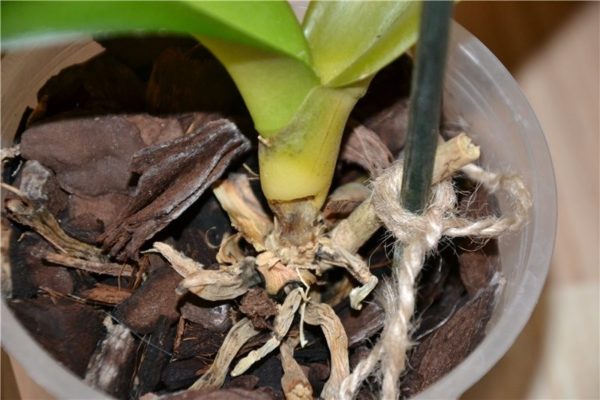 Root decay occurs due to too frequent watering of the soil, which occurs during the period of "hibernation" of phalaenopsis. This usually happens in autumn or winter, when the plant does not need so much moisture and watering should be reduced. To resuscitate an orchid, you need to know the causes that caused problems with it, and then boldly eliminate them without harm to the flower.
Root decay occurs due to too frequent watering of the soil, which occurs during the period of "hibernation" of phalaenopsis. This usually happens in autumn or winter, when the plant does not need so much moisture and watering should be reduced. To resuscitate an orchid, you need to know the causes that caused problems with it, and then boldly eliminate them without harm to the flower.
Possible reasons if the orchid began to rot:
- The soil was not replaced and it crumpled. If there is stagnation of moisture, then there is a chance that the roots have disappeared.
- In poor lighting, part of the water is not absorbed, remaining on the surface of the soil. High humidity negatively affects the roots, but the lack of moisture makes them dry.
- The root system of the orchid is delicate and due to improper feeding is easily damaged. For example, a chemical burn will occur if the flower is fertilized too often.
- When transplanting orchids, it is possible to spoil the roots and prevent their infection, leading to the process of decay.
- Perhaps the attack of pests on the phalaenopsis, which feed on its roots.
If the orchid dies, it must be treated so as not to allow the complete death of the plant. Rotting is detected if:
- orchid growth slows or stops;
- the roots are dried and the leaves turn yellow;
- the flowers fall;
- the plant wobbles in the ground.
A rotten spot on the root is also a visible factor in its infection. Even with a cut of a light root, you can see a black core in it. It is also necessary to monitor the release of mucus when pressing the root. Because of these problems, it is worth knowing how to resuscitate an orchid without roots.
Symptoms of the disease and methods of salvation
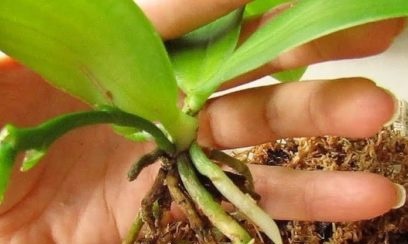 A sign of healthy roots is their hardness and the presence of a green tint, but if yellow orchid roots are observed, what should I do? To plant it, you need to use transparent pots, it is easier to observe the roots. If you notice the symptoms of the disease in time, then it will become much easier to treat it:
A sign of healthy roots is their hardness and the presence of a green tint, but if yellow orchid roots are observed, what should I do? To plant it, you need to use transparent pots, it is easier to observe the roots. If you notice the symptoms of the disease in time, then it will become much easier to treat it:
- weak and sluggish leaves;
- a noticeable coating appears on the walls of the pot;
- the roots on the surface have become dark or dried out;
- decomposition of rhizomes into separate threads.
If the orchid is damaged, resuscitation is considered necessary. With good attention, the flower shows its resistance to difficult events. There are three most basic methods of revitalization:
- in a mini greenhouse;
- in a transparent container;
- in ordinary soil.
Before resuscitating an orchid with rotten roots, it is necessary to choose an effective method to save it, and for this it is necessary to find out the level of damage.If the flower loses less than 60% of the roots, then it takes about a month to restore, and if the orchid has all the roots rotted, then it will take less than a year to look after it. How the orchid is revitalized depends on the conditions of stay of the flower and developed roots.
In a mini greenhouse
An effective method to save an orchid without roots is to store it in a mini-greenhouse. Fill a small container with sphagnum, place expanded clay under it, and then moisten the resulting substrate. Lay on it a damaged outlet, which, together with the pot, put in a mini-greenhouse. To maintain conditions, it is recommended that:
- air temperature, which should be from + 22C to + 28C;
- constant light for 12-14 hours;
- moisture content of about 70%.
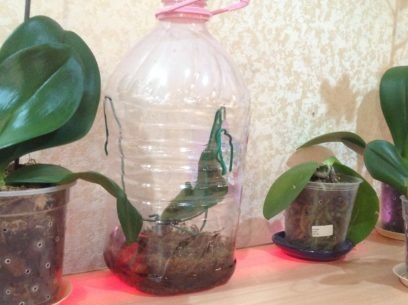 The soil should be constantly watered, a greenhouse should be aired, and the flower should be checked for defective damage. If you follow the instructions, then in two weeks you will be able to root the orchid without roots, and new roots will appear on the flower. When they grow to five centimeters, the orchid can be planted in open ground.
The soil should be constantly watered, a greenhouse should be aired, and the flower should be checked for defective damage. If you follow the instructions, then in two weeks you will be able to root the orchid without roots, and new roots will appear on the flower. When they grow to five centimeters, the orchid can be planted in open ground.
Without the use of a greenhouse
Thus, you can grow the roots of the orchid. First you need to get rid of spoiled leaves, process the roots of the orchid, and then place it in a deep pot. The flower must be attached to the wire so that it is suspended from the bottom of the pot. Pour liquid into it so that the leaves do not get wet, but, at the same time, part of the plant was immersed. After a few hours, pour out the water and dry the plant.
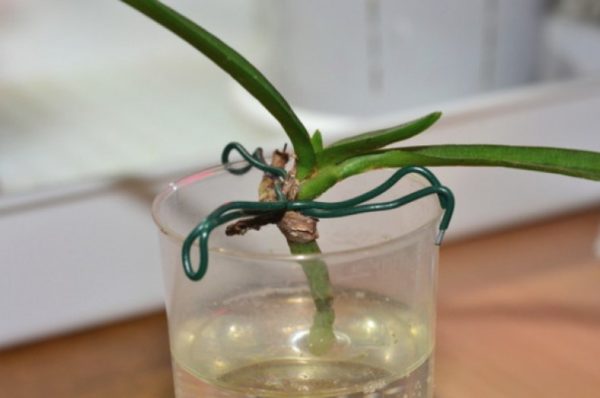 Another effective way of revitalization is the reanimation of orchids in the water. Before resuscitating an orchid at home, you need to understand what damage it received. This can be checked by the state of the roots, which are always green in a healthy state. However, the younger the plant, the lighter and darker only when immersed in a liquid or cultured. Old roots are usually gray or brown. Getting rid of the soil and flushing the root system will make it clear the severity of the injuries.
Another effective way of revitalization is the reanimation of orchids in the water. Before resuscitating an orchid at home, you need to understand what damage it received. This can be checked by the state of the roots, which are always green in a healthy state. However, the younger the plant, the lighter and darker only when immersed in a liquid or cultured. Old roots are usually gray or brown. Getting rid of the soil and flushing the root system will make it clear the severity of the injuries.
Wash the remaining roots from the soil, examine them for defects and cover them with ground cinnamon, which has a disinfecting property. The first week to limit the orchid in watering, because this will prevent fresh cuts from dragging out and growing roots will no longer work. Then put the transplanted flower in a place where it is warm and there is no bright sunlight. To bring back to normal orchids that grow new roots, you need good care.
How to reanimate an orchid without leaves and roots
In this case, you need to move it to the greenhouse. Add claydite and moss to the bottom of the container, water the resulting soil, and ventilate the greenhouse well. It is recommended to do this at night when oxygen is saturated with carbon dioxide, which is good for the rooted system. For better rooting, you need to take into account air temperature, lighting and adequate moisture.
Sometimes in watering along with ordinary water you need to use components that help save an orchid without leaves, but with roots:
- Vitamins B will help restore rotten roots. Watering with such fertilizer can be done once a month.
- Once every two months, it is worth feeding the orchid potassium and phosphorus in the form of fertilizers.
- Glucose helps form new cells, which is why it is also considered necessary. If phalaenopsis is healthy, then the substance is produced by itself in the process of photosynthesis.
If the orchid is without a growth point, you need to get rid of all the roots that are considered rotten. To do this, the scissors must be sanitized in advance. After that, place the plant in water so that it rises above the surface. Put the pot with orchid in a warm place. Thus, the plant will begin to regenerate, growing new roots.
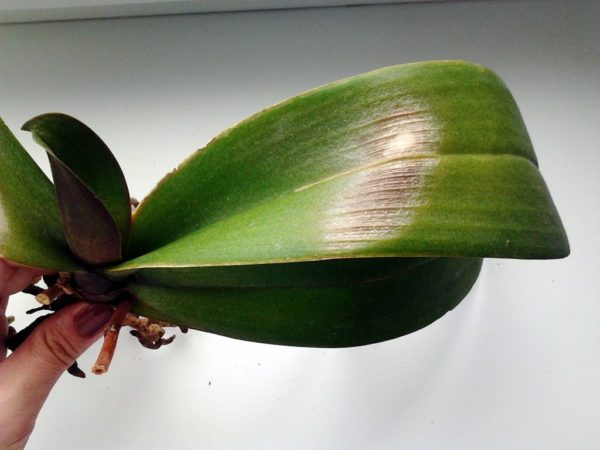 If the orchid leaves rot, but the root remains intact, then you need to follow simple rules to save a plant without leaves at home:
If the orchid leaves rot, but the root remains intact, then you need to follow simple rules to save a plant without leaves at home:
- no need to wait until the yellowed leaves have dried, you need to remove the plant from the pot and examine the roots;
- it is necessary to follow the rules of irrigation;
- if the orchid is purchased in a store, then it must be checked for infection and defects;
- at times the plant needs to be transplanted into another soil.
If the roots of an orchid rot and all the leaves dry, then the flower cannot be restored. Resuscitation of an orchid without leaves, if only the roots are preserved, is possible.
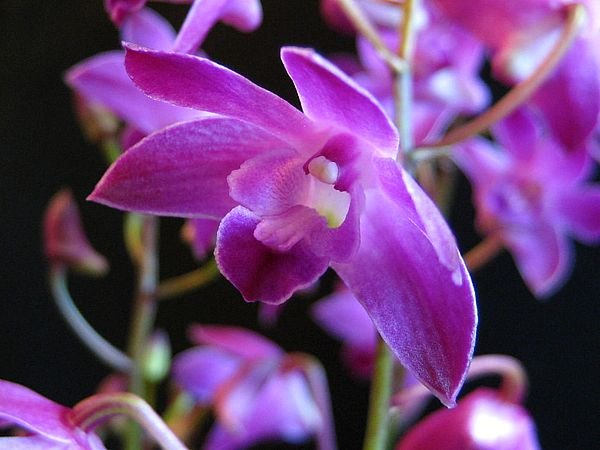 You may be interested in:
You may be interested in:Care for sluggish plants and further prevention
What if the orchid has rotten roots? Do rhizomes resuscitate? Yes, it is possible to do this by caring for a plant in the greenhouse. To do this, you need to water the soil from time to time and monitor the ventilation, which is best done in the dark. Oxygen begins to be saturated with carbon dioxide, which in turn favorably affects the reproduction of the root system. After two weeks, the first roots will appear, and when they reach 3-4 cm, the resuscitated orchid can be transplanted into the usual conditions.
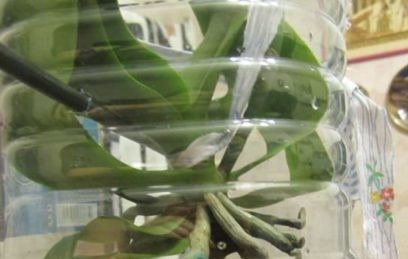 After finding out all the possible reasons why the orchid rotted and why it lost a lot of leaves, you need to learn about preventive measures that will not allow resuscitation of orchids to be required so often. To do this, you need to monitor good illumination, air temperature and sufficient watering so that the roots do not rot due to waterlogging. If the orchid was damaged during the first dilution, root growth also poses a problem for the entire development, which is undesirable to repeat.
After finding out all the possible reasons why the orchid rotted and why it lost a lot of leaves, you need to learn about preventive measures that will not allow resuscitation of orchids to be required so often. To do this, you need to monitor good illumination, air temperature and sufficient watering so that the roots do not rot due to waterlogging. If the orchid was damaged during the first dilution, root growth also poses a problem for the entire development, which is undesirable to repeat.
To use one of the preventive methods, first you need to find out the cause of infections or other injuries. There are several ways of varying degrees of exposure so that such problems do not appear:
- Each person’s medicine cabinet has the usual antibiotics that can also be used for flowers, but they must be used very carefully.
- If only the leaves rotted and they were cut, then the flower eats with the help of the stem. You can get rid of the flower, but not the entire peduncle. After saturation with nutrients, it will dry out, and the orchid itself will get rid of it. But if the peduncle from the very beginning does not look the best, then it is better to remove it immediately.
- The landing tank should be equipped with holes and well ventilated, and the soil should not be made too dense so that nothing would interfere with air circulation.
- Watering the plant is necessary not according to the schedule, but according to the color of the root system.
- It is necessary to take into account the illumination, especially in autumn and winter. During this period, it is desirable to reduce fertilizer application.
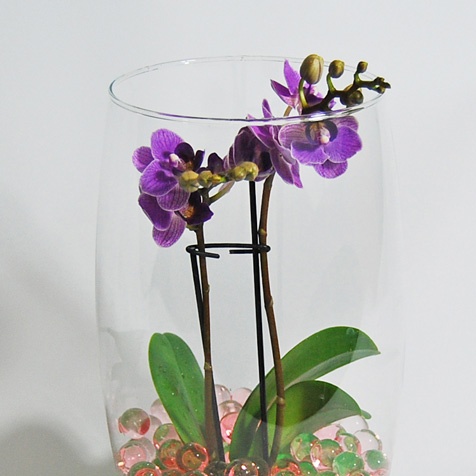 You may be interested in:
You may be interested in:Reviews
People who grow orchids share their impressions and cultivation secrets.
Natalia, 38 years old.
What do I love in phalaenopsis? They bloom very beautifully and magnificent. I got the first orchid with missing roots, but now it feels great, healthy and green. Caring for a flower is simple: water it so that sluggish leaves do not appear, protect it from the scorching sun and occasional drafts, do not over-moisten and do not dry it much. That's all you need to know about it.
Svetlana, 28 years old.
After shopping at the store, it is best to plant the flower in a transparent pot due to access to light. Acquire soil only in specialized stores, because it has little land, and more sawdust. Humidification can be done not too often. Growth occurs quickly, so from time to time you need to transplant into another pot. Very practical flowers that create a mood.
Olga, 45 years old.
In the apartment in which I grew up, window sills were covered with medicinal plants. In my own house, I decided to do things differently. When the orchid appeared, I realized that it would occupy all the windows in it. Pink flowers look interesting, beautiful and bright, while they are “in hibernation”, others blossom. With proper care, they will delight you with warmth, and give comfort at any time of the year.
The plant is not known for demanding careful care and care, but frequent watering, excessive fertilizing with fertilizer and if there is little sunlight at the planting site, this leads to the death of the plant. Therefore, it is best to carry out preventive measures in advance than to observe how the roots of an orchid gradually rot. If the flower’s roots have dried up and the leaves turn yellow, then we immediately restore its flowering and healthy appearance, since the plant disappears without roots.

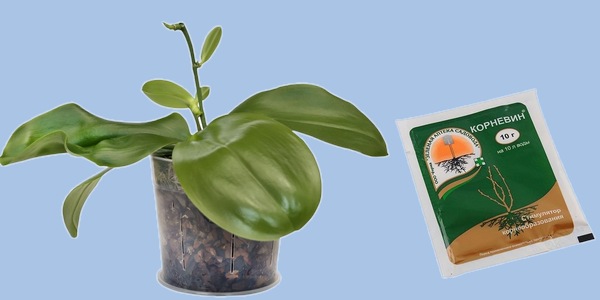
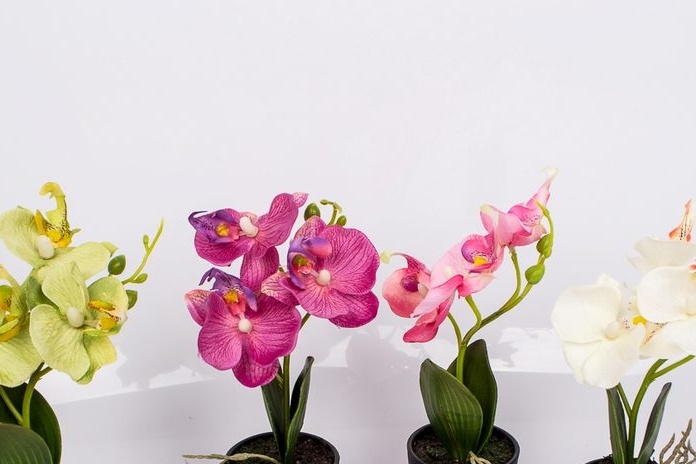
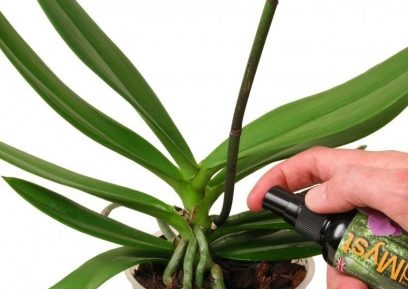
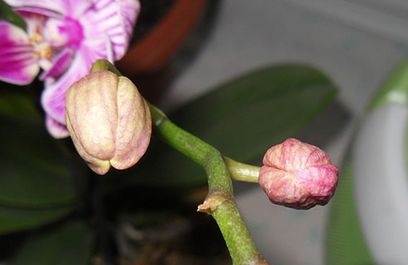 Reasons why orchids fall flowers and what to do
Reasons why orchids fall flowers and what to do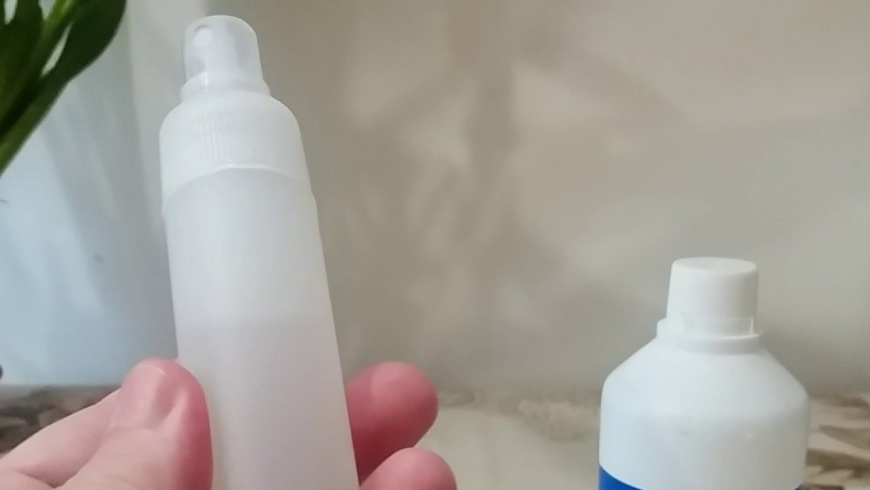 How to use hydrogen peroxide for orchids and why
How to use hydrogen peroxide for orchids and why Midges are wound up in the orchid: effective ways to get rid
Midges are wound up in the orchid: effective ways to get rid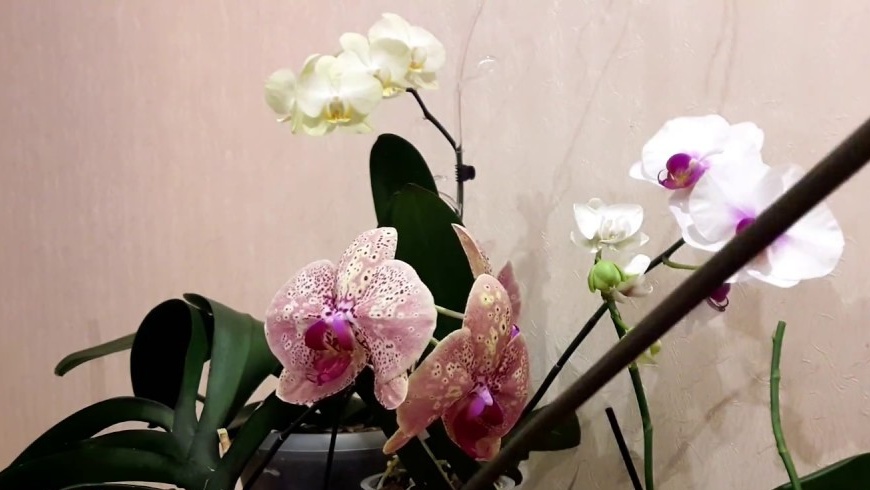 Is it possible to transplant an orchid during flowering
Is it possible to transplant an orchid during flowering